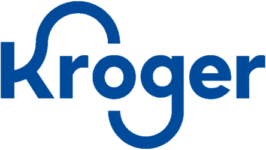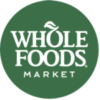Blanched Almond Flour

Almond Flour Market Overview 2025
Executive Summary
Comprehensive executive summary of the Almond Flour market analysis, highlighting key insights, trends, and strategic recommendations for 2025.
Executive Summary
The global almond flour market is a mid‑sized, high‑growth specialty ingredient category with clear structural tailwinds and concentrated supply. Consensus planning figures place the sector in an ~8–9% CAGR band through the early‑to‑mid 2030s: representative baselines sit between USD ~1.2–1.6B in the mid‑2020s with a reasoned base case of ~USD 2.6–2.7B by 2032 and upside scenarios to USD ~4.9–6.2B by 2035 if premiumization and APAC adoption accelerate. Demand is led by bakery and confectionery (>50–59% of use), with B2B (industrial/commercial) representing roughly 55–60% of value and retail/e‑commerce the fastest‑growing channel. Strategic winners will combine supply resilience, rigorous quality/traceability, differentiated premium SKUs, by‑product monetization and omnichannel commercialization.
Key Market Insights
-
Market scale & growth
- 2024–25 baselines vary (~USD 1.2–2.5B) but forecasts converge on mid‑to‑high single‑digit growth (typical 7–9% CAGR). North America is the largest value market; Asia‑Pacific is the fastest growing from a smaller base.
-
Demand composition & product premiumization
- Bakery remains the anchor. Blanched, superfine and organic SKUs are growing faster than the category and command persistent premia (blanched ≈ +$0.15–0.30/lb ex‑factory; organic +10–25% over conventional). Some markets show organic commanding ~45–60% of revenue in premium channels.
-
Supply concentration & price dynamics
- Almond kernel production and milling capacity are highly concentrated (California is dominant; Spain and Australia are key secondary nodes). Kernel price movements are the primary driver of flour cost (a $0.10/lb kernel move shifts flour cost ~ $0.11–0.13/lb). 2024 marked normalization from 2022 peaks; 2025 expected range‑bound pricing with upside risk if receipts are light.
-
Technology, processing & circularity
- Two main processing routes: whole‑kernel milling (native‑fat premium flours) and mechanical oil‑extraction (screw‑press) producing partially‑defatted high‑protein flours. By‑product streams (skins, hulls, blanch water, shells) are sizeable and monetizable; circularity materially improves unit economics and ESG positioning.
-
Trade, logistics & regulatory environment
- HS 1106.30 trade lanes are subject to wide tariff variance and growing policy volatility; China is high‑revenue but high‑policy‑risk. Logistics choices (FCL consolidation, barrier packaging, temperature control on hot routes) materially affect shelf life and costs. Food‑safety (aflatoxin, Salmonella) and allergen controls (gluten‑free validation) are mandatory commercial gates.
-
Consumer & channel behavior
- Almond flour’s sensory advantage (moistness, tenderness) drives repeat purchase. Core consumers are health‑motivated home bakers and prosumers; foodservice/B2B drives volume. E‑commerce, subscription and recipe/content are pivotal to premium SKU adoption.
-
Risks
- Material exposure to raw‑material volatility (water stress, pollinator risk), regulatory tightening on allergens/claims, adulteration risk under price stress, and competition from lower‑cost substitute flours.
Strategic Recommendations (Actionable for C‑suite)
-
Product & Portfolio: adopt a barbell strategy
- Premium: scale blanched, superfine, organic SKUs with validated bake‑performance claims, lot‑level traceability and third‑party certifications (USDA Organic, Kosher; gluten‑free certification <10 ppm where commercial).
- Value/Volume: offer reliable conventional or blended SKUs for industrial bakers and snacks with predictable specs, tight pricing bands and technical service.
-
Secure & diversify supply
- Multi‑origin sourcing (US + Spain/Australia), multi‑year contracts with price bands/collars, grower partnerships tied to water‑use & pollinator KPIs, and expand kernel storage (inventory buffer) rather than relying solely on spot markets.
- Consider tolling or selective vertical integration in shelling/milling to protect margins during price spikes.
-
Operationalize QA, traceability & testing
- Deploy a layered QA: portable NIR/SWIR screening at intake (adulteration action threshold ≈5% w/w), targeted ELISA/LC‑MS for allergens and aflatoxin on risk‑based lots, and forensic follow‑up for anomalies. Use NIST RM 8404 for method verification.
- Invest in hygienic dry‑milling design, optical sorters, validated pre‑milling lethality (pasteurization) and lot‑level COAs to win retail and co‑pack contracts.
-
Monetize by‑products & invest in processing capability
- Prioritize screw‑press and PDAF commercialization for high‑protein flours, develop skin and blanch‑water extracts, and evaluate hull energy/biomass opportunities to reduce Scope 1/2 costs. Integrate LCA to underpin sustainability claims and price premiums.
-
Commercial & channel strategy
- B2B: expand technical service, specification co‑development (particle‑size, absorption), and lock long‑term supply to large bakers.
- DTC & Retail: invest in recipe content, retail media (Amazon A+), subscription mechanics and product ladders (1 lb trial → bulk → professional) to capture premium margin. Prioritize APAC with localized textures and social‑commerce GTM.
-
Procurement, pricing & hedging
- Use layered hedging: quarterly coverage, collars/indexed contracts, and differentiated coverage for blanched vs natural. Model kernel pass‑through (~1.1–1.3×) into price ladders and maintain reopening clauses for tariff/policy shocks.
-
Trade compliance & logistics
- Build landed‑cost models (CIF basis, duty + VAT calculations), prioritize low‑tariff FTAs, pre‑validate HS 1106.30 classification, consolidate FTL/FCL shipments, and mandate barrier/N2 packaging for long routes. Treat China as opportunistic with shorter tenors and GACC readiness.
Market Outlook (Near‑term and Long‑term)
- Base case (near‑to‑mid term): expect continued normalization of prices (2025–26) with range‑bound ex‑factory bands and mid‑to‑high single‑digit growth (8–9% CAGR). Kernel receipts, carryover stocks, and weather/bloom conditions will be the principal near‑term volatility drivers.
- Upside case: accelerated premiumization (organic/blanched adoption), successful APAC expansion, and by‑product commercialization can push growth toward the higher forecast band (~9–10%+) and materially raise ASPs and margins.
- Downside case: severe crop shocks, prolonged regulatory constraints, or rapid substitute adoption could compress growth toward ~6–7% CAGR and pressure margins.
Priority KPIs to monitor: % revenue from premium/organic SKUs, % supply under multi‑year contract, kernel carry‑in days, NIR screening pass rate, ELISA positive rate, by‑product monetization % of kernel value, DTC repeat rate and B2B retention.
Top five immediate actions (90‑day roadmap)
- Lock multi‑origin kernel coverage and increase storage capacity.
- Implement intake NIR screening + ELISA protocol and adopt NIST RM 8404 verification.
- Launch a premium blanched superfine SKU with traceability and GF COA.
- Pilot screw‑press PDAF commercialization and skin‑extract product development.
- Build landed‑cost models for priority export corridors and update contract templates with tariff/waiver clauses.
Conclusion: The almond flour category offers durable growth and margin upside for firms that pair supply resilience with product performance, rigorous QA/traceability and circularity. Executing the barbell product strategy, hardening procurement and QA, and commercializing by‑products will be the highest‑leverage moves to capture market share and protect margins.
Get A Free Sourcing Audit
Streamline your sourcing process with fast, reliable solutions. Let us help you find the best ingredients from the best suppliers. Fill out the form below to get started today!
Savings is BIG but the relationship value is MASSIVE! Glad we met when we did. Looking forward to building this partnership with you and David.
Yohan, here to say you’re one of my favorite suppliers. Aside from your high quality ingredients, you’re so great to work with. Thanks for all the help you’ve given us this year.
Working with Global Savors and Yohan has been very smooth when sourcing ingredients. They offer a great selection and and cost savings! Yohan has been awesome to work with and we look forward to continuing business together.






Global Savors is your trusted partner for seamless ingredient sourcing, offering end-to-end solutions that streamline procurement, simplify logistics, and elevate your supply chain efficiency.
View More News
© 2025 Copyrights by Global Savors. All Rights Reserved

